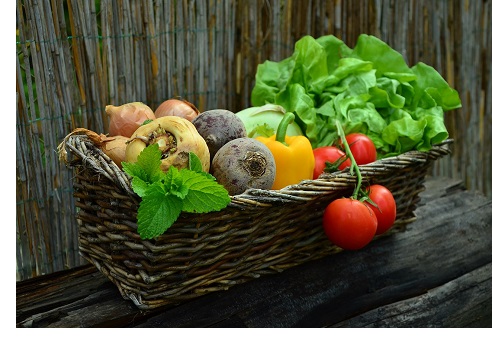Eat Like a Peasant, Enjoy Splendid Health
October 18, 2018
 My great-grandfather, Henry O’Keefe, M.D. (1859-1941) was a country doctor in North Dakota; he would routinely go out in the winter to do house calls in a horse-drawn sleigh to tend to the sick. He was often paid “in kind,” which happened when his patients didn’t have money to pay him, so they bartered by giving him a chicken, eggs, nuts, or vegetables.
My great-grandfather, Henry O’Keefe, M.D. (1859-1941) was a country doctor in North Dakota; he would routinely go out in the winter to do house calls in a horse-drawn sleigh to tend to the sick. He was often paid “in kind,” which happened when his patients didn’t have money to pay him, so they bartered by giving him a chicken, eggs, nuts, or vegetables.
Researchers at the University of Leicester in England correlated health records from the 19th century with diets followed at the time in various regions of the United Kingdom. This recent study found that those who were living in isolated areas out in the countryside of England and Scotland, and in rural Ireland, had the healthiest diets and the best health. What’s more, these rural folks had the lowest death rates from tuberculosis, a disease that is linked with poor nutrition.
The researchers noted that 19th-century peasants in the United Kingdom would often get paid with cheap food such as vegetables, potatoes, fish and milk, rather than money. On the other hand, the wealthier classes could afford to be pickier about what they ate, and so tended to prefer meat and butter, and foods made with sugar and white flour. These wealthy folks generally had more obesity and overall worse health in the long run.
The peasants mostly ate cheap, seasonal vegetables like onions, cabbage, leeks, carrots and turnips. The available fruits were apples in the fall and winter and cherries in the summer. They also ate plentiful chestnuts and hazelnuts, often roasted. Instead of expensive meat, they ate omega-3-rich oily fish and seafood, including herring, oysters, mussels, cod and haddock. Consequently, these peasants were 90 percent less likely to develop coronary disease, cancer and Alzheimer’s than we are today.
People who are conscientious about nutrition are often willing to spend a small fortune in expensive restaurants and for trendy superfoods in their pursuit of a good health. But, the meager diet of poor Victorian peasants proved to be better than the eating habits of the wealthy who were living “high on the hog.”
This simple peasant diet was similar to what we currently refer to as the Mediterranean diet, which was also the diet traditionally eaten by the peasants of these Mediterranean cultures. This diet has been found to be ideal for reducing the risk of type 2 diabetes, high blood pressure, Alzheimer’s dementia, and heart disease.
These peasants’ limited choices in food meant they had to rely on natural and unprocessed foods, which is a more nutritious diet. According to an English cookbook written in 1849 called Cottage Cookery, recipes that would be staples in a rural peasant’s diet included cabbage and potato soup, stir about - an Irish porridge of oats and milk, and stewed ox-cheek with onions.
In Good Health,
James O'Keefe, MD





